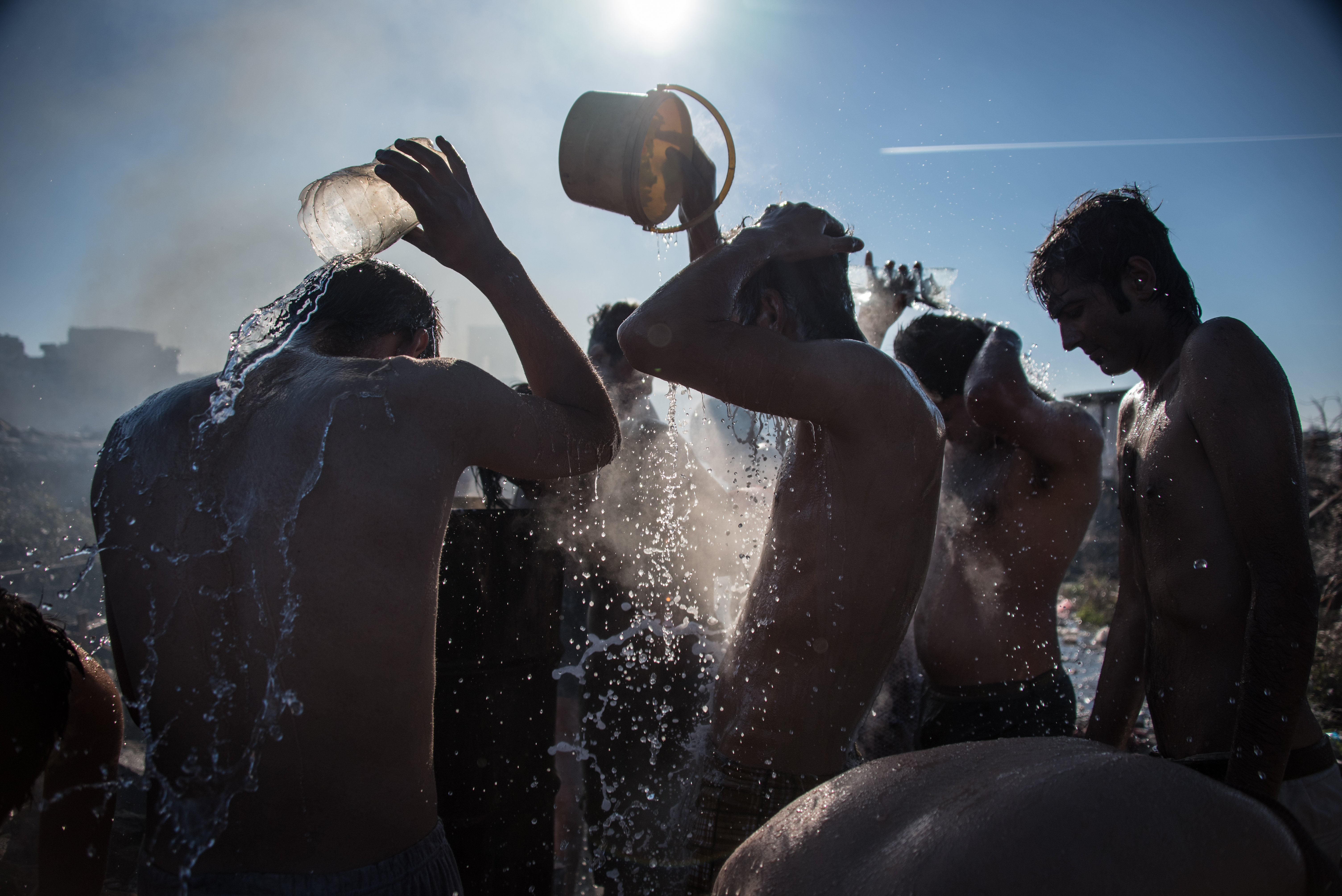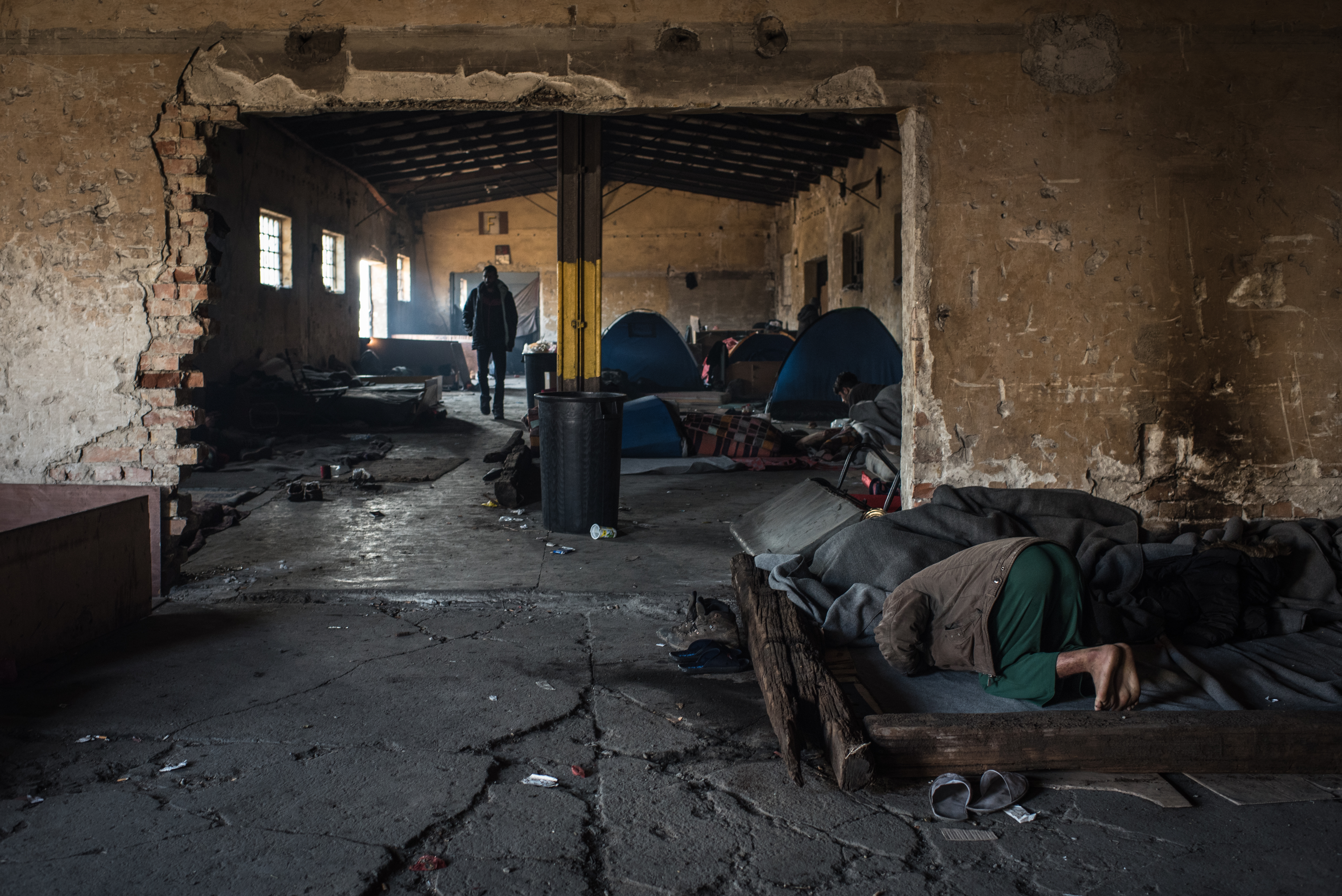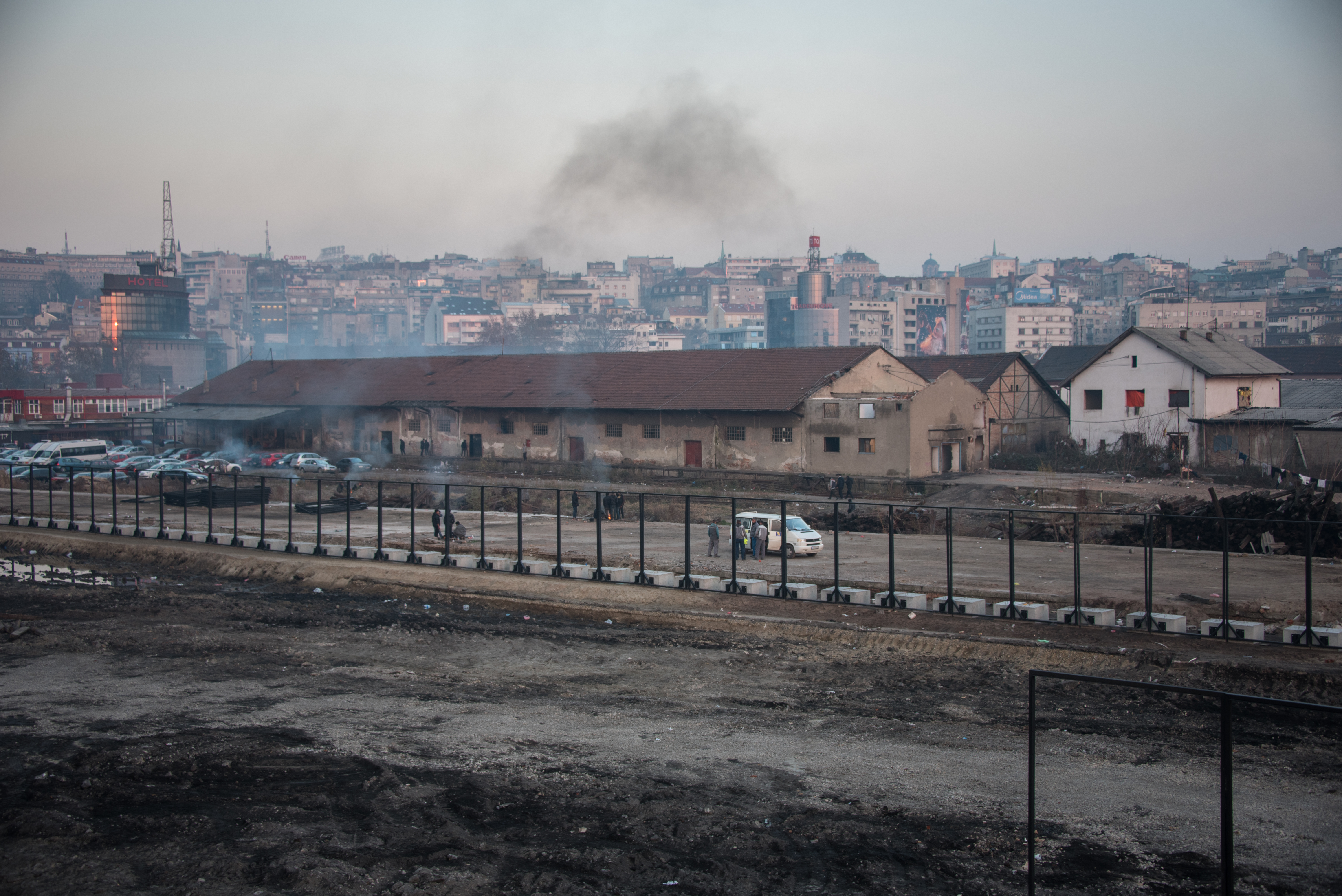BELGRADE, Serbia – “Welcome to our five-star hotel,” Kamal Zadran says with a grin. “Let me show you around.”
The 20-year-old English teacher from Kabul, Afghanistan, leads the way through an alley dotted with human feces and into a large warehouse, part of an abandoned train depot in the center of the Serbian capital, Belgrade.
Inside, groups of young Afghan and Pakistani men huddle around campfires that produce smoke so thick you cannot see from one end of the building to the other. Barely visible in the choking, gray haze, more than a thousand migrants have taken shelter here after trying, unsuccessfully, to cross into the European Union via Serbia’s northern borders.
Crowded living conditions have led to outbreaks of body lice and scabies. Fights break out regularly in the train depot, where tensions are high due to prolonged stagnation. In recent weeks, one asylum seeker living in Serbia committed suicide while another tried but failed, according to Andrea Contenta, humanitarian affairs officer for Doctors Without Borders (MSF) in Serbia.
Zadran and his four cousins claimed a small room in a building next to the warehouse, where one night in early December, they serve a dinner of tomatoes, potatoes and eggs in a large pot. One of them had a black eye.
“The police in Croatia beat us so bad,” Zadran says, describing the group’s effort to reach E.U. member state Croatia via the Serbian border town of Sid. “They caught us right away. The first policeman punched us, the second beat us with a stick and the third kicked us … then they sent us back here.”
Zadran has a phone full of pictures of friends with bloody gashes on their heads resulting from such beatings. He says it’s just part of the process. He has tried to cross into Croatia and Hungary 18 times over the last few months and vows to continue until he succeeds.

Kamal Zadran, a 20-year-old English teacher from Kabul, Afghanistan, with his four cousins inside their room in the train depot. (Diego Cupolo)
Refugees and migrants have ended up in this train depot out of a profound mistrust of Serbian authorities. While Serbia has 13 state-run reception centers, they are shunned by asylum seekers who have heard stories of being locked up or deported to Macedonia – the opposite direction from which they want to travel.
Many migrants in Serbia like Zadran are stuck in a revolving door between violent border patrols in the north and reported expulsions to the south, with Belgrade and its abandoned warehouses as the nerve center.
The U.N. estimates there are around 7,000 refugees and migrants in Serbia, about 1,500 of whom are sleeping rough in Belgrade or near the border with Hungary.
Their numbers continue to grow. While Balkan countries closed their borders to the flow of migrants earlier this year, many people continue to cross borders undetected or with the help of smugglers. Last week, Croatia found 67 mostly Afghan migrants, some of them unconscious, crammed inside a van traveling from Serbia.
“Serbia risks becoming a dumping area for the ones who are not accepted in the E.U.,” says MSF’s Contenta. “Somehow they are stuck between the failure of E.U. policies and the national border control measures which have been taken so far.”

Asylum seekers wash themselves at an outdoor bathing area behind the train depot. Despite rampant skin diseases, the warehouse inhabitants have access to just three “real” showers in a local refugee aid center. (Diego Cupolo)
Serbia says it has sufficient accommodation to house all migrants in the country and denies carrying out deportations. “This fear [of deportation] is completely groundless,” Ivan Miskovic, a spokesperson for Serbia’s Commissioner for Refugees (KIRS), said in a phone interview, calling deportation rumors “nonsense.”
“The most important story is there are still free beds in Presevo [for] every single migrant that claims asylum,” he said.
However, the numbers don’t add up. Miskovic said the Serbian government has pledged to make 6,000 beds available for asylum seekers, around 900 less than the current U.N. estimate of the migrant population. The U.N. says all migrant reception centers in Serbia are “now fully occupied, some more than double their capacity.”
It is more difficult to verify the deportations, as no data on them has been made public to date. Yet deportation stories abound in Belgrade. Zadran says he was deported to Macedonia several times, after which he returned to Serbia on foot through rural areas.
In November, the UNHCR requested clarification from Serbia’s Ministry of Interior about reports that a group of 41 registered asylum seekers from “refugee-producing countries” were deported to Macedonia “outside of any legal/readmission frameworks.” When contacted for this article, the ministry did not respond.

A man prays on his sleeping area inside one of the smaller buildings inside the abandoned train depot complex. (Diego Cupolo)
Seyar Mehrabi, a 20-year-old economics student from Logar, Afghanistan, chose to be expelled voluntarily. After spending five months in Belgrade, Mehrabi was detained and brought to the Presevo migration center in southern Serbia, where he says he was not allowed to leave the camp grounds.
While there, he was offered transportation to another country. He wasn’t told which one, but he accepted as it appeared to be the best way out of Presevo. A few hours later, Mehrabi was dropped off in Macedonia. He immediately returned to Serbia overland and is now living in the Miksaliste Refugee Center in central Belgrade.
KIRS spokesperson Miskovic said movement in the camps was only limited to reduce the spread of body lice and scabies. Otherwise, healthy inhabitants could come and go as they pleased, as long as they returned by nighttime, he said.

Asylum seekers line up to eat during the once-a-day food distribution organized by independent volunteers. The Serbian government has advised NGOs to stop providing aid to the warehouse inhabitants and encourage them to move out. (Diego Cupolo)
In Belgrade’s train depot, Zadran’s eyes remain fixed on Europe. “One of my cousins made it to Italy,” he says. “He tried to cross 12 times, but now he is there and has a good place. He has asylum. In Italy, they respect people from Afghanistan … one day I’ll get there, too.”
In the meantime, he is stranded in Belgrade, with little to shield him from the freezing Serbian winter. Even Miskovic, the KIRS official, agrees the situation is “not a sustainable one.”
Authorities tried to relocate the warehouse inhabitants to camps in early November, surrounding the building with riot police at 4 a.m., but people just returned to the warehouses after police had left.

The abandoned train depot, seen from afar, is scheduled for demolition in the coming months to make way for Belgrade’s riverfront redevelopment project. (Diego Cupolo)
Recently, the government asked humanitarian organizations to stop distributing aid in the city, saying it was encouraging asylum seekers to stay in the train depot. Miskovic went a step further, accusing charities of spreading misinformation.
“The migrants are somehow manipulated by a number of organizations giving them some false promises, some false hopes,” Miskovic said. “They don’t help them. They are harming them.”
The warehouses are scheduled for demolition in the coming months, but the government has yet to confirm a plan for the inhabitants, according to Miskovic.
“This is something that will be decided very soon, but on the high levels of the state,” he said. “[Migrants] will make a choice. Either to start the asylum procedure, to enter the system, or to be in a detention for foreigners.”
This version corrects an earlier version of the story which reported that the suicide and attempted suicide took place in the Belgrade depot. In fact, they took place elsewhere in Serbia.
